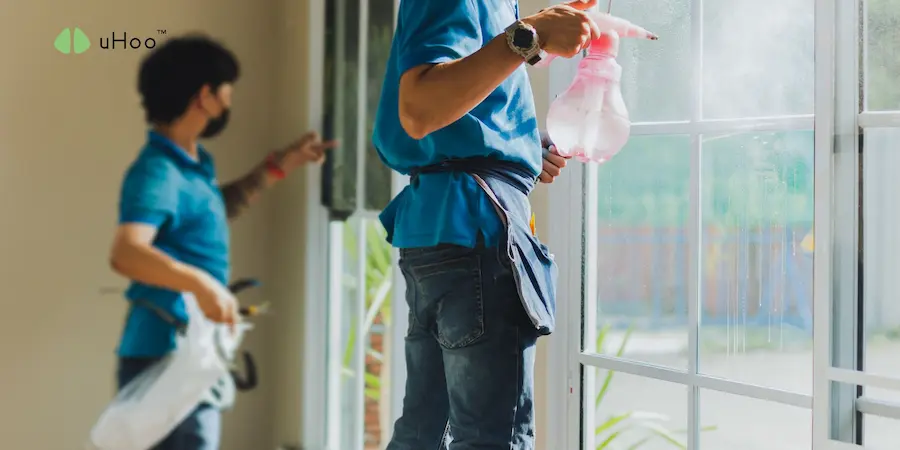Filters act as gatekeepers, trapping irritants and preventing them from becoming a permanent fixture in your breathing zone. However, this vital function has a crucial caveat: filters have a saturation point. Beyond this critical window, their ability to effectively capture pollutants diminishes drastically, ushering in a cascade of negative consequences. Waiting too long to replace a filter isn’t just about reduced performance; it’s about actively compromising your indoor environment.
The Downward Spiral of Delayed Replacement
- Air Quality Degradation: As a filter becomes overloaded, the airflow becomes restricted. This can lead to trapped pollutants being forced back into the circulating air, effectively turning your filter into a source of secondary pollution. Allergies and respiratory issues can flare up, and the overall freshness of your home’s air noticeably declines.
- Appliance Strain and Inefficiency: When filters are clogged, the systems they serve have to work harder. Your HVAC unit struggles to circulate air, leading to increased energy consumption and higher utility bills. Your vacuum cleaner loses suction power, making cleaning less effective and potentially overheating the motor. This added strain can also shorten the lifespan of your valuable appliances.
- Microbial Havens: The warm, often humid environment within a saturated filter, combined with the trapped organic matter, creates an ideal breeding ground for mold, mildew, and bacteria. Delaying replacement allows these microorganisms to proliferate and potentially be dispersed throughout your home’s air, posing a significant health risk.
The key to avoiding these pitfalls lies in understanding and respecting the critical window for each type of filter in your home. This isn’t about waiting until the filter looks disgustingly dirty; by that point, its efficiency has likely plummeted. Instead, it’s about establishing a proactive replacement schedule based on manufacturer recommendations and your specific environmental factors (pets, allergies, usage).
- HVAC Filters: The critical window for standard 1-inch filters is typically 1 to 3 months. Exceeding this significantly reduces airflow and filtration effectiveness. Monthly changes are often necessary for homes with higher pollutant loads.
- Vacuum Cleaner Filters: The critical window varies by model. Some are washable and require regular cleaning (every few months), while disposable ones generally need replacement every 3 to 12 months. Ignoring this can lead to dust recirculation.
- Air Purifier Filters: Pre-filters often have a shorter critical window, requiring monthly washing or replacement. HEPA and activated carbon filters, responsible for capturing finer particles and odors, typically need replacement every 6 to 12 months, depending on usage and pollutant levels.
- Kitchen Range Hood Filters: Grease filters have a short critical window due to rapid buildup and potential fire hazards, often requiring monthly cleaning or replacement. Charcoal odor filters also have a limited lifespan of around 3 to 6 months.
Strategies for Hitting the Window Every Time
- Calendar Commitment: Mark your calendar with recurring reminders for each filter type. Treat these dates as non-negotiable appointments for your home’s health.
- Visual Cues with a Deadline: While visual inspection shouldn’t be the sole indicator, make it a monthly habit. If a filter looks heavily soiled before its scheduled replacement, don’t hesitate – act immediately.
- The “Subscribe and Save” Advantage: For frequently replaced filters, set up automatic delivery services to ensure you always have a fresh filter on hand when the critical window arrives.
While adhering to a timely filter replacement schedule is paramount, the uHoo air quality monitor offers an invaluable layer of insight into the actual impact on your indoor environment. By continuously tracking particulate matter (PM2.5 and PM10), volatile organic compounds (VOCs), and other key IAQ parameters, uHoo allows you to see the real-time effectiveness of your filter replacement efforts.
Spikes in pollutants can indicate that you’ve exceeded the critical window for a particular filter or that external factors are impacting your IAQ, prompting you to adjust your replacement schedule accordingly. By combining a proactive, timely approach to filter changes with the intelligent monitoring of uHoo, you ensure that you’re not just guessing, but actively maintaining the cleanest and healthiest air possible within your home.



